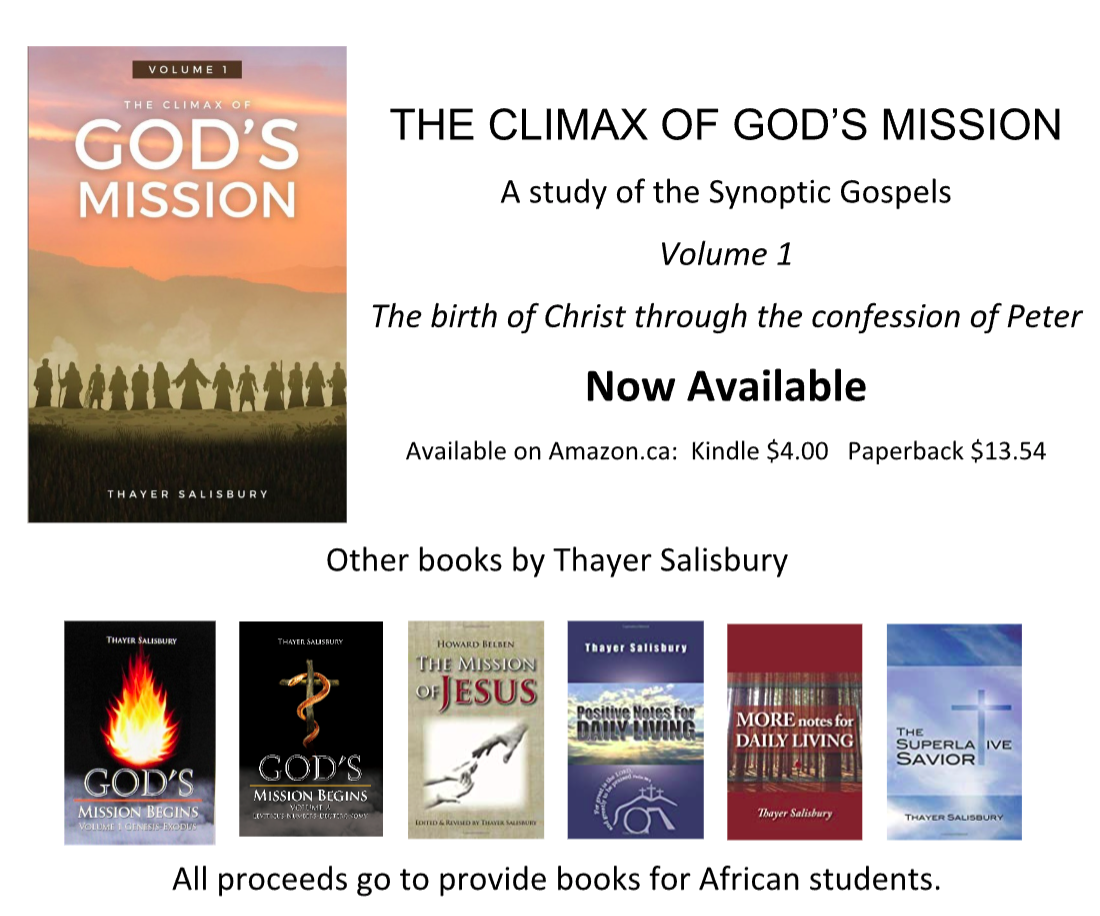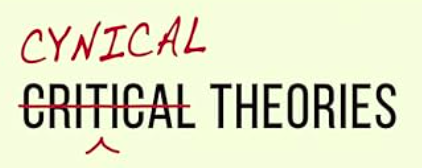David Berlinski comments that mathematicians often see themselves as slightly above other academic disciplines. There are two reasons for this. First, they have serious doubts about the rigor of other academic disciplines and second, they distain the imprecision of non-mathematical arguments (Berlinski).
What then would motivate a mathematician to seriously study sociology? It was feminist glaciology. You may wonder what that could be and so did James Lindsay a Mathematician. He was reading a paper “Glaciers, gender, and science: A feminist glaciology framework for global environmental change research” (Carey). He could not believe that an article claiming to be focused on physical science could be so devoid of factual measurement or argumentation. As a mathematician he had generally worked from the assumption that serious research involved facts, physical measurements and carefully cited and reasoned arguments. His disappointment and frustration led him to share his concerns with some collogues who would start a project now known as “The Grievance Studies Affair.”
In order to demonstrate their thesis that the humanities had been taken over by a political agenda and lacked any academic credibility, Lindsay teamed up with two other scholars; Helen Pluckrose and Peter Boghossian. They planned to write hoax papers and submit them to academic journals in the areas of gender studies, queer studies, and fat studies. Their effort was highly successful with seven out of twenty papers accepted for publication. Seven more were in review when they came forward ending the experiment (Mounk).




This effort involved a great deal of research into the core concepts and philosophical assumptions of what they called grievance studies (what today we usually call “wokeness”). A more technically correct label would be “Critical Studies.” You may be familiar with the term “Critical” because of its notoriety in relation to “Critical Race Theory,” which is but one of many areas of studies that can be labeled “critical.”
Since the results of the “Grievance Studies Affair” became public James Lindsay has found a role as a public intellectual lecturing and writing on “critical theory” and its various expressions. Lindsay posts much of his work on his web site “New Discourses.” Helen Pluckrose the other author of the paper has also gained considerable notoriety from her involvement in the “Grievance Studies Affair”. As expected she does not find herself welcomed by her previous colleagues as a humanities researcher, rather she works as a political and culture writer and is the founder of Counterweight, an organization that seeks to work against the enforcement of wokeness in various institutions.
Clearly, both authors come to their effort from a strong background of academic research and personal experience. In the book “Cynical Theories,” the authors seek to define and offer informed criticism of wokeness as an ideology, as well as offer a better alternative, which is modern liberalism. Their general thesis is that wokeness is applied postmodernism. Therefore it carries with it the weaknesses of postmodernism. They are not arguing that the world does not have any social problems, rather that liberalism offers a better way forward.
Before we can discuss this claim and how the authors advance it a brief definition of wokeness, or critical theory is in order. Critical Theory goes back to Karl Marx and his economic binary of the bourgeois and proletariat. Later, thinkers influenced by Marx liked his idea of oppressor and oppressed as a way to understand society but modified his theory somewhat. It was not the capitalists oppressing the workers (although that was still true) rather, it was western culture also known as white Christian culture oppressing subordinate cultures. In order to change culture, and end oppression it is necessary to help people see this oppression and once aware of it respond accordingly. Those who engage in the effort to identify oppression, make people aware of it, and then cause them to respond to it, label themselves “critical theorists.” They have been doing their work for some time in sociology departments of universities. As their field has expanded and developed over time it has broken down into various sub-disciplines. These disciplines are now specific areas of study, but they all share the oppressor oppressed understanding of society.
It is not at all surprising to see critical theorist finding common ground with postmodernism because postmodernism postulates that all metanarratives are power grabs. Critical theorists are deeply concerned about such power grabs and see them everywhere. They are also largely convinced that everything is a social construct perpetuated by language. Again, this sounds perfectly postmodern. There is however one major fly in the ointment. That fly is the social binary, which is without a doubt, a metanarrative and therefore to be rejected, according to postmodernism.
In order to prove their thesis that wokeness (critical theory) is postmodernism applied, the authors first establish two principles and four themes of postmodernism. They then seek to demonstrate that these principles have informed and influenced each category of Critical Theory.
The authors identify the two principals of postmodernism as:
- The Postmodern Knowledge Principle: which is “radical skepticism about whether objective knowledge or truth is obtainable and a commitment to culture contructivisim.”
- The Postmodern Political Principle: which is “A belief that society is formed of systems of power and hierarchies, which decide what can be known and how.
The authors identify four major themes of postmodernism as:
- The blurring of boundaries; if there is no access to truth and everything is a social construct then there can be no meaningful delineation of anything.
- The power of language; ideas that seem to be objectively true are in fact simply construction of language. For example, man and woman are only different because we call them by different names.
- Cultural relativism, what we believe to be true is informed not by reality but by culture.
- The loss of the individual and the universal, everything is culturally conditioned there are no individual ideas only collective ones, further since everything is culturally conditioned nothing is universally true.
Following the chapters introducing postmodernism Lindsay and Pluckrose examine each of the major disciplines of critical theory to demonstrate how the above principles and themes have been brought to bear in each area as follows:
Postcolonial Theory:
Western colonizers enforce their perception of truth on marginalized indigenous populations through language and ideological privilege. Valuing rationality, empirical evidence, testing and measuring as objective ways of accessing truth disregards “other ways of knowing.” Therefore accepted ways of knowing must be rejected in favour of non-western (read non-rational/ testable) methods.
Standpoint theory:
This comes heavily into play here with the suggestion that various perspectives offer unique insights which can’t be perceived by those outside of a given community. Colonial/ western voices should be diminished while indigenous voices should be prioritized. Here, the authors point out how postmodern rejection of objective truth and its insistence that any truth claim is in fact a power play from the foundation of Postcolonial Theory.
Queer Theory:
Despite the term queer usually being associated with sexuality, in this case it is considered – departure from the normal. Normal is understood as oppressive and problematic. Rather queer theory seeks to do away with the concept of normal such that all variance is equal and equally valid. In order to achieve this, Queer Theory seeks to “deconstruct discourses” in order to delegitimize categories that currently seem obvious and useful to us. This certainly includes categories like male and female but wants to press further toward categories like human/animal, living/mechanical, and even right/wrong. In this case again, the authors highlight a rejection of objective truth as well as the use of language to enforce a particular perspective.
Critical Race Theory and Intersectionality:
This is a deeply American theory which holds that people are inherently racist and that the power dynamic is the white oppressor class enforcing their cultural dominance over everyone else but especially black people. Further intersectionality holds that oppression is felt more depending on factors such as gender and sexuality. This chapter requires some nuance as postmodernism is rejected as yet another attempt by white males to enforce cultural dominance. Intersectionality however fits a postmodern view quite well as it seeks to accommodate various perspectives and experiences weighing and or valuing them in terms of oppression.
Feminisms and Gender Studies:
Feminism in its current form is considerably different than its’ past iterations. It is not simply seeking equality between genders. It is easy to see how Marx’s power dynamic could be easily taken onboard and applied to males oppressing females. However, this seems hard to maintain with a postmodern rejection of categories derived from accurate perceptions of reality. The authors rightly point out that this has led to a divide within feminism. Some holding to the idea that “woman” is a real category while others have moved toward a more postmodern perception of gender as a social construct, focusing on one’s standpoint rather than actual biological gender.
Disability and Fat Studies:
Disability studies began with a noble goal of making the world more accommodating to those with physical and mental disabilities. No one takes issue with this. However, disability studies go further in borrowing principles from queer theory which relies on postmodernism to reject the idea that anything can be said to be normal. Further it is considered problematic to hold the view that being able bodied and neurotypical is preferable in any way to being disabled in some way.
Fat studies uses similar ideas to those discussed under queer theory to reject the notion that anything can be said to be normal. This includes body size. It also seeks to reject objective truth claims about health and well-being in favour of standpoint theory in which each situation provides its own truth which cannot be understood and more importantly cannot be questioned.
Social justice is broken into two chapters;
- “Scholarship and Thought,” and
- “In Action.”
Social justice scholarship is said to have adopted postmodern claims about truth as a power grab. They accept this as absolute truth. The authors suggest the only absolute truth. This is of course a metanarrative. If this sounds contradictory that’s because it is. Critical scholars have taken one key element from postmodernism but don’t hold to the philosophy. The authors point out that this represents a practical evolution of postmodern thought. They do seem to miss one of the key components of Critical Theory; liberation.
Liberation is the greatest goal of critical theorists not truth. Thus they are happy to adopt one tenet of postmodernism because of it’s practical value to their goal, even if they elevate it to an explanatory role pure postmodern philosophy would not. Ideas are assessed by Critical Theorists based on their effectiveness not their accuracy.
For example: Social justice scholarship is deeply concerned about the identity of those involved in it. It is considered deeply problematic to read the work of white males, while minorities are to be favoured even if they are not as academically credible. This example works well to demonstrate both the scholarship and action components.
Finally, the authors suggest that critical theory does not offer anything helpful to society, rather, liberalism with its freedom and equality does. The authors describe liberalism as adhering to the correspondence theory of truth. As valuing objective investigation and freedom of opinion to express that which has been investigated. Liberalism is said to have “firm tenets of individual liberty, equality of opportunity, free and open inquiry, free speech and debate, and humanism.” The authors credit these principles as having led to all of the advancements, freedoms, and rights that we have come to accept as foundational in the modern west.
The last chapter is a strong appeal to abandon the dogmatism of wokeness in favour of the freedom of modern liberal democracy.
Having considered the overall content of the book, we can say that it is a good treatment of the subject matter. There are some areas which could be improved.
Conspicuously absent is a chapter on “Critical Pedagogy.” Given the current climate and the centrality of this discussion to education it seems like an obvious inclusion. I have also heard James Lindsay speak in an interview addressing Critical Pedagogy very effectively (Lindsay). There was some discussion of this in the application chapter but again it seems that Lindsay has enough content and that it’s of sufficient importance to justify its own chapter.
The authors suggest modern Liberalism as the best alternative to critical theory crediting it with bringing about the rights and freedoms we value in our modern age. Perhaps the authors’ own bias is showing here. While I laud their effort to push back against Critical Theory and its influence the human dignity, equality and freedom that authors desire is a result of Christian influence on Western civilization. Tom Holland has demonstrated this powerfully in his book “Dominion” which outlines the rise and influence of Christianity in the west and how it has created modern civilized society (Holland).
There is much to recommend the content and organization of cynical theories. The authors demonstrate a high level of understanding in regard to both postmodern thought and critical theory. They have clearly spent extensive time and energy getting to know and understand each of the sub-disciplines they have described and critiqued. Having the chapters correspond to sub-disciplines also serves the practical purpose of allowing the reader to access information quickly and easily. I would recommend that readers take time to read the first two chapters defining postmodernism before jumping into a specific discussion.
That said, considering Critical theory primarily as an application of postmodernism means that the authors have in many cases not given Marx or the early Frankfurt school enough credit. This has caused them to miss the devotion to liberation that motivates and informs Critical Theory at least as much as postmodern thought.
History plays a central role in each chapter as the authors seek to lay out the development of key ideas. However they seem to forget that Critical Theory extends back further than Foucault and Derrida to Hegel and Marx. This brings their thesis into question as these thinkers could not have been influenced by postmodernism. The same could also be said of other influential critical scholars from the Frankfurt school and institution for social research. This is not to deny the legitimacy of their claims as the influence of postmodernism is evident among critical scholars. The authors could have noted this and then carried on to say that later Marxist’s found new breath in Foucault and Derrida which allowed them to present their ideas in a more convincing way.
In terms of organization, we have already commented on the utility of addressing various disciplines by chapter. Neil Shenvi has presented similar material but organized by key concepts rather than by disciplines. The authors could have been more well-rounded in their approach had they delineated these concepts which are common to all branches of Critical theory.
Shenvi outlines them as follows:
- The Social Binary: society is to be viewed as a fight for power by a dominant cultural group and a subordinate one. As mentioned above white Christian males are the dominant cultural group. Other groups such as women, various races, various sexual identities are all deemed to be part of the oppressed. Intersectionality is the discipline which seeks to explain how these groups relate to one another.
- Oppressive Hegemony: A set of cultural values or norms which the dominant culture uses to keep subordinate cultures in line. (We listed some of these ideas or norms above)
- Standpoint Theory: only those who are oppressed have access to truth. This is why we are told only women can have an opinion on abortion, or only racialized people can speak about racism.
- Social Justice: liberation through opposition to and removal of the oppressive cultural group and or it’s ideas. Down with the patriarchy is one expression of social justice. As would be down with heteronormativity (Shenvi).
Each of these concepts is identifiable in “Cynical Theories” however by not specifically identifying and defining each one the authors leave the reader to questions how they are identifying Grievance studies. It would not have taken long to point out that the above four concepts are as central to contemporary critical theory (wokeness) as postmodernism and maybe more.
Overall “Cynical Theories” is an excellent treatment of a deeply troubling aspect of modern culture. It can help us to understand and oppose harmful ideas. It is organized in a helpful way and very well researched. If I were going to recommend one book on the subject this would probably be the one. However, it could have been more complete by thoroughly outlining the history of critical theory and adding a stand along definition before discussing the contribution of postmodernism. The authors have demonstrated considerable influence from postmodern thought on current critical theory but may overstate their case. To gain a more balanced view I would strongly recommend readers familiarize themselves with the work of Neil Shenvi (Shenvi) before reading Cynical Theories. With that qualification I can recommend the book.
Barrie ON
Works Cited
Berlinski, David. Science After Babel. Seatle: Discovery Institue Press, 2023.
Carey, Mark. Sage Journals. 9 July 2016. <Glaciers, gender, and science: A feminist glaciology framework for global environmental change research>.
Holland, Tom. Dominion. New York: Baisc Books, 2021.
Lindsay, James. You Might Already Be A Member. 15 06 2023. <https://www.youtube.com/watch?v=bnrdyphape4&t=9s>.
Mounk, Yascha. What an Audacious Hoax Reveals About Acedemia. 5 10 2018. <https://www.theatlantic.com/ideas/archive/2018/10/new-sokal-hoax/572212/>.
Shenvi, Neil. Shenvi Apologetics. 2021. <https://shenviapologetics.com/intro-to-critical-theory/>.

